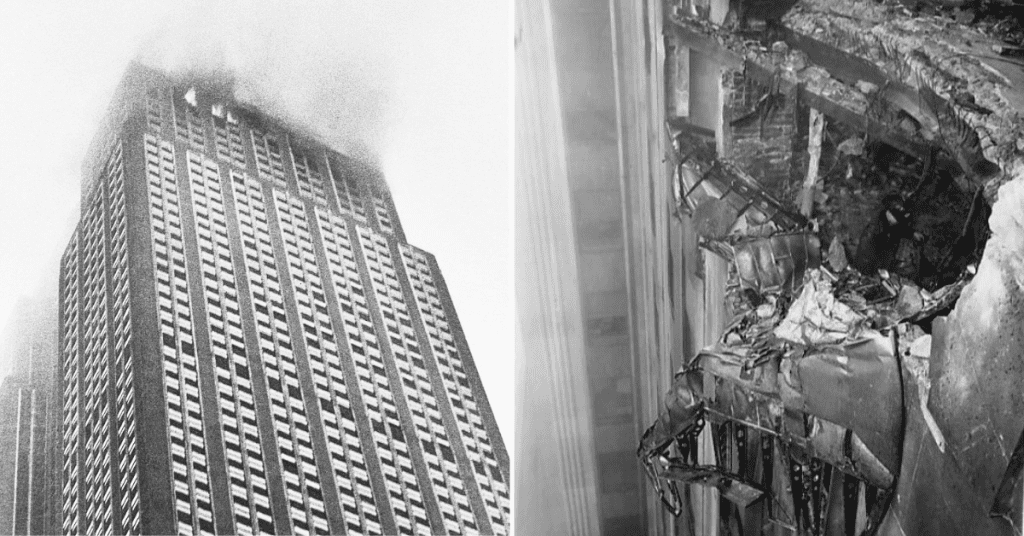It was a foggy Saturday morning in New York City, July 28, 1945. While the world was still at war and soldiers were returning home, Manhattan bustled with the routine of daily life. But just before 10 a.m., the skies over Midtown would witness something unimaginable a B-25 Mitchell bomber flying directly into the Empire State Building.
The crash would kill 14 people, leave a fiery hole in one of the most iconic buildings in the world, and yet, just two days later, the Empire State Building would reopen standing tall as a symbol of American resilience.
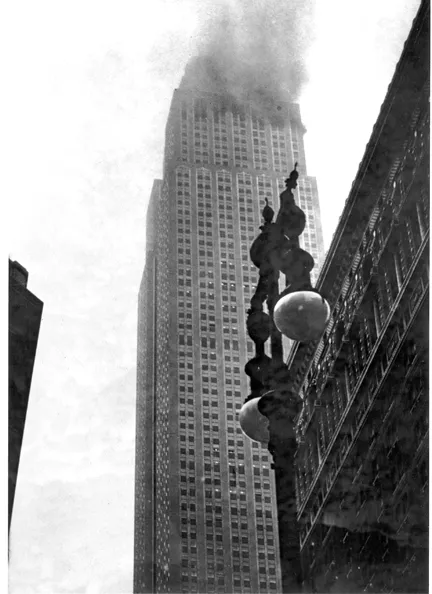
Why a Bomber Was Flying Over Manhattan
The pilot, Lieutenant Colonel William Franklin Smith Jr., was an experienced U.S. Army Air Forces officer ferrying a B-25 bomber from Massachusetts to New Jersey’s Newark Airport. But the weather was unforgiving. A dense fog had rolled over New York City, severely limiting visibility.
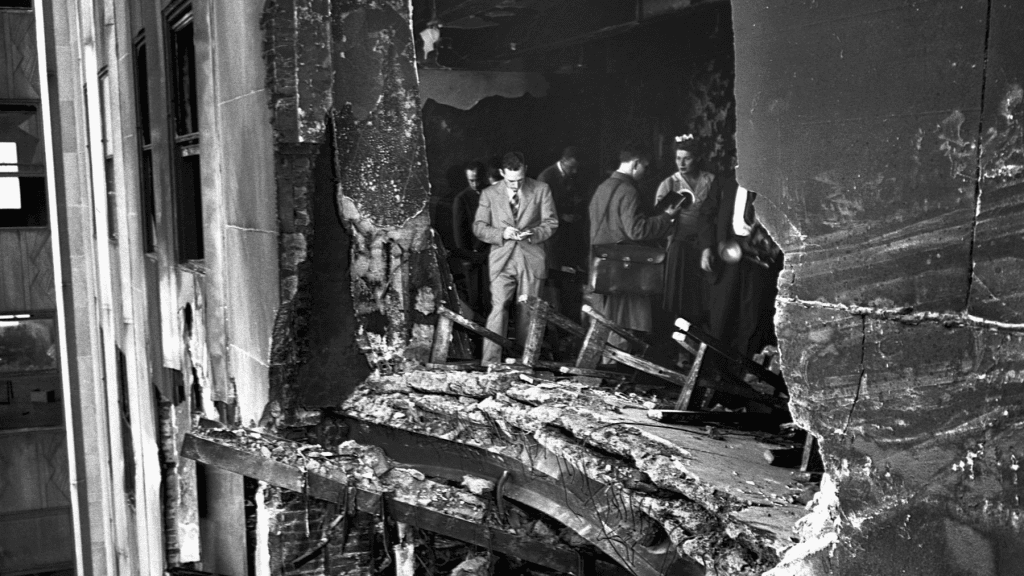
Smith requested clearance to land, but due to the poor conditions, air traffic controllers advised extreme caution. Disoriented by the low visibility, Smith began circling Manhattan in search of a safe route. Tragically, his plane veered off course.
Video:
What Happened 69 Years Ago at the Empire State Building
The Moment of Impact
At 9:40 a.m., the bomber struck the north side of the Empire State Building’s 79th floor, instantly erupting into flames. One engine shot through the building and landed on a nearby rooftop, while the other plummeted down an elevator shaft. Fires broke out on multiple floors, and chaos gripped the building.
Inside, office workers and building staff were going about their day when the crash shattered windows, filled hallways with smoke, and caused immediate panic. Of the 14 who died, 11 were in the building and 3 were crew members on the bomber. Dozens more were injured.
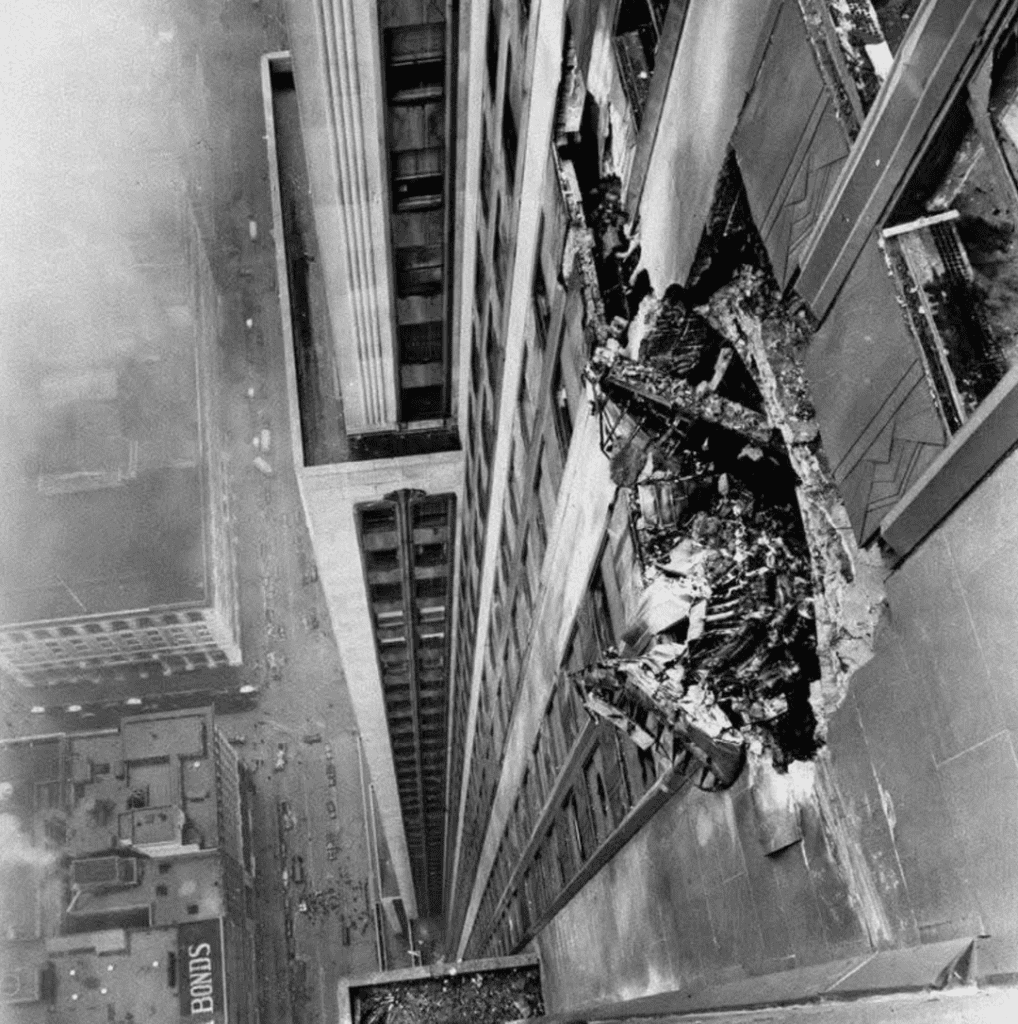
The Elevator Miracle
Among the stories of destruction came one of incredible survival. Elevator operator Betty Lou Oliver was working that morning when the plane’s impact damaged the cables of her elevator. The car she was in plunged 75 stories yet she survived.
Her fall remains a Guinness World Record for the longest survived elevator drop. She suffered severe injuries but ultimately recovered, becoming a symbol of human endurance in the face of catastrophe.
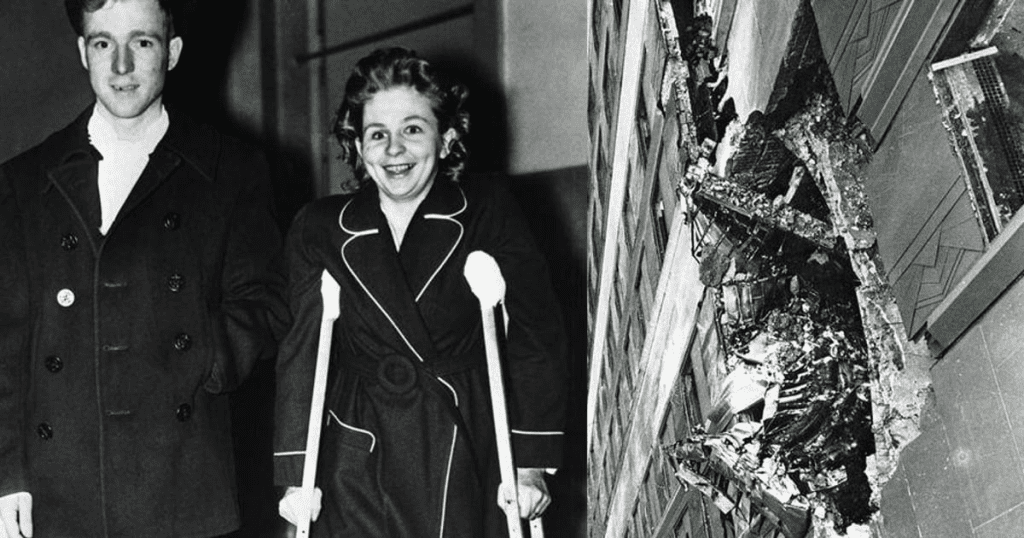
A Building That Refused to Fall
Despite the gaping hole in its side, fires raging on multiple floors, and structural trauma, the Empire State Building completed just 14 years prior stood firm. Engineers quickly assessed the damage and found the steel structure largely intact. Repairs began immediately, and by Monday morning just two days later the building reopened.
Video:
Bomber Crashes into Empire State Building (1945)
To many, this was more than a technical achievement. It was a moment of national pride. In a world shaken by war and uncertainty, here was a building that had taken a direct hit from a military aircraft and kept going.
Lasting Legacy and Lessons Learned
The 1945 Empire State Building crash prompted significant changes in aviation and emergency response protocols. The Federal Aviation Administration (FAA) and city authorities revisited regulations on flying over populated urban areas, particularly in poor weather.
It also became a case study for engineering resilience, highlighting the importance of steel-frame design, fireproofing, and structural compartmentalization in limiting destruction.
For New Yorkers and Americans alike, the event also reinforced the cultural symbolism of the Empire State Building. Once the tallest structure in the world, it had already stood for ambition and progress. Now it also stood for strength in the face of disaster.
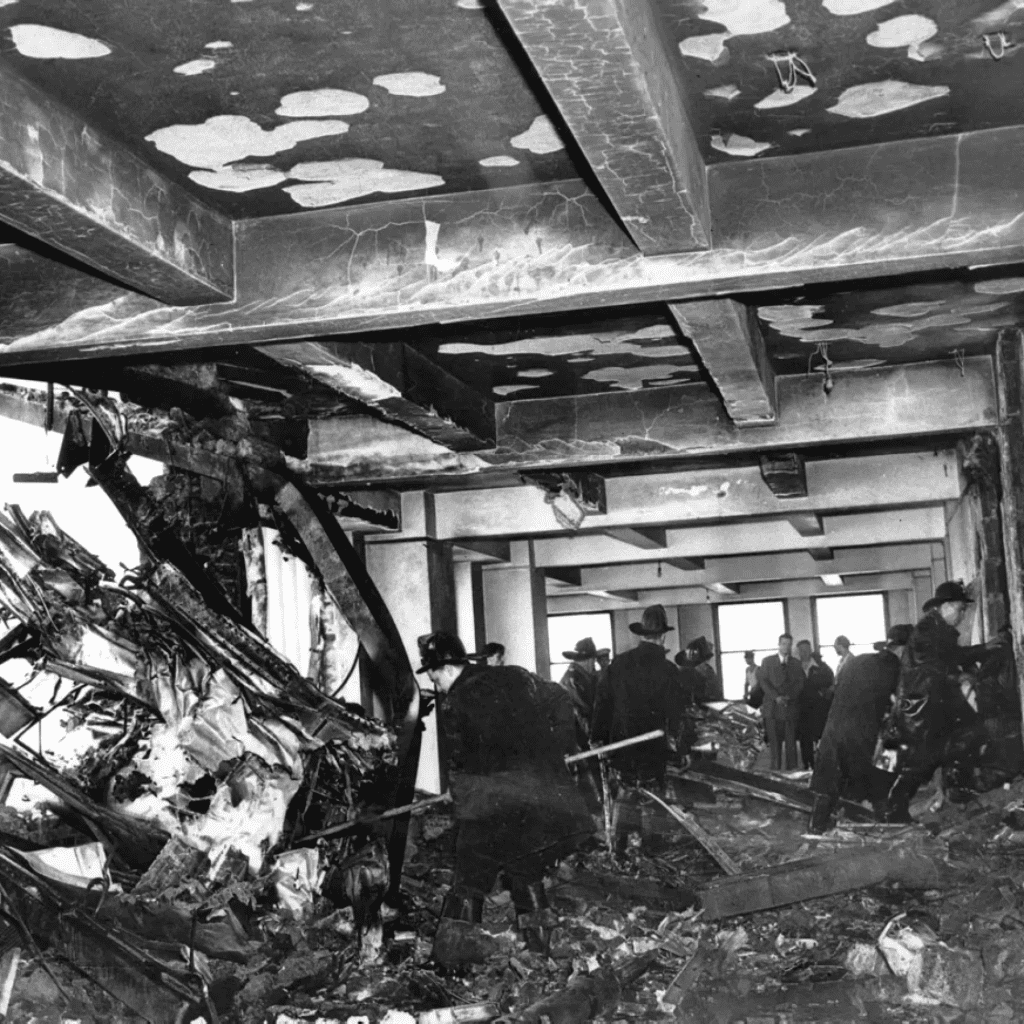
Remembering the Day History Hit Midtown
Though not as widely known as other tragic moments in American history, the 1945 bomber crash into the Empire State Building is a reminder of how even the most ordinary day can take a sudden turn into the extraordinary. It reminds us of fragility and resilience how quickly disaster can strike, and how powerfully people and places can respond.
Today, visitors to the Empire State Building can see images and read accounts of that fateful day. There’s no large memorial, no permanent scar. But the story lives on in the archives, in engineering manuals, and in the memory of a city that refused to fall apart.
